Debbie to Keven Kroehler (KK): What’s this problem about?
KK: It’s about trisecting an angle. Do you know what that means? Let’s start with bisecting. What does bisect mean?
Debbie: To cut into two sections.
KK: Trisect?
Debbie: Three sections.
Kroehler demonstrates several problems, answers Debbie’s questions, and sets her to work on her own. Three girls have been waiting patiently for Keven’s ear.
Student: We need some help figuring out how to keep the records for the Hawaii fundraiser. [They hand him several pages of photocopied receipts.]
KK: You need to have one column for revenue—to list
out your revenues and where they are from, and then create a total.
And then you need to have an expenses column and list all of your
expenses, whom they are to, and then have another total. You need
to keep all of your receipts and mark what they are for. Where possible,
all expenses need to be preceded by a purchase order. [Kroehler
and the three girls confer some more.]
KK: Go work on it and come back and show me what you have. Bookkeeping is about being methodical and recording everything. The auditor at the end of the year will come in and ask, “Why did you write that check?” It sounds complicated, but it’s not really that hard once you understand the mindset.
Another student approaches Keven with a problem that has him stumped.
KK: Do you know what sort of problem this is?
Student: An elimination problem.
KK: Good. So let’s say, for example, that you have
two equations, (x + y = 5) and (3x - 2y). You can multiply both
by -3 and then combine them so that the x’s are cancelled.
[Works out this and another example.] Once you’ve seen
this sort of problem 20, 30, 40 times, it starts to make sense.
The student sitting at Kroehler’s right puts her practice test before Keven, who answers her quick question. Debbie is ready for more help.
Debbie to KK: What’s an equilateral triangle? An isosceles triangle?
KK: An equilateral triangle is when all the angles are equal.
[Keven takes out his compass and demonstrates.] An isosceles
triangle is when ... [again demonstrates.]
Debbie: And what’s converging? Diverging? Is converging where they cross, diverging where they go away?
KK: Why don’t you ask Chris [who has been sitting quietly next to Debbie, working on his own geometry problem set.] He’s an expert on that.
A boy comes to the table to see Keven.
Student: I’m having a problem with “winzip”
[a computer program]. Can you come take a look?
KK: Sure. [Gets up and follows the student to his work station.]
8:50 am [concurrently] Project team meeting
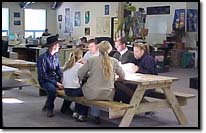 Throughout each five- to seven-week block, MNCS faculty and staff
regularly set aside an hour, in teams of three, for “project
reviews.” During this time, students “propose” projects,
individually or sometimes in small groups, that they want to undertake.
They do so by filling out a project
proposal form, then answering the team’s questions
about it. Students may also “finalize” projects during this
hour: they summarize what they did, often answer questions that probe
what they have learned, and justify the credit they are requesting.
Throughout each five- to seven-week block, MNCS faculty and staff
regularly set aside an hour, in teams of three, for “project
reviews.” During this time, students “propose” projects,
individually or sometimes in small groups, that they want to undertake.
They do so by filling out a project
proposal form, then answering the team’s questions
about it. Students may also “finalize” projects during this
hour: they summarize what they did, often answer questions that probe
what they have learned, and justify the credit they are requesting.
Project credits are the core currency at MNCS, and the project team meetings is where they are vetted. Whether the subject is physical education or choir, American History or biology, all MNCS students must translate their work into the nomenclature of projects and petition for the credits they believe their efforts deserve. MNCS expects students to earn an average of 10 credits a year.
Often, these project reviews are perfunctory. In the case of proposing, students have already discussed their plans with their advisor, who is one of the three members of the review team. When it comes to finalizing, students have typically shared their work-in-progress and end results with their advisor and other staff.
Sometimes, however, these contract negotiations—as one
MNCS advisor described them—produce considerable back and forth
between a student and the team, plus compromises over credits earned.
Although each 25 hours a student logs on a project theoretically
equals a quarter-credit, the quality of the student’s effort
often alters this equation.
Today, seven students have projects to propose or finalize.
Casey, 13, proposes a project in which he will study combat during
World War II.
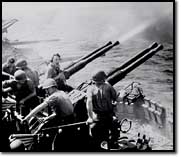 Dee Thomas (DT): Are you more into machinery and equipment or the policies that led up to the war?
Dee Thomas (DT): Are you more into machinery and equipment or the policies that led up to the war?
Casey: More into the combat. Along the way I’ll show how it started out, what the combat involved.
DT: Do you know any veterans you can interview to get firsthand experiences?
Casey: Yea, Lloyd Olson, he flew in a B-52.
DT: So he’ll be a living resource. You can interview him?
Casey: I actually interviewed him once before, when I was in elementary school, and he told me all about his experiences, he showed me pictures.
DT: Now that you are older, what would you learn from him that’s new, that’s different?
Casey: I’m not sure.
DT: Why don’t you have Claudia [student teacher] help you come up with some questions for Lloyd. You should sit down with Claudia and work with her to get your project focus clearer.
[More conversation follows.]
Casey proposes another project—on robotics.
 [Team studies his completed project proposal form.]
[Team studies his completed project proposal form.]
Dean Lind (DL): What’s an “analogue controller”?
Casey: I don’t really know. It’s one of the things
I hope to find out with this project.
DT: So why do you want to take 50 hours of your life and build a robot?
Casey: I guess I want to see how far I can go with it, to learn some electrical circuitry type stuff.
[More discussion.]
Ashely, 17, finalizes her spelling project.
Ashley: As you can see, I used the workbook Mastering Spelling.
I completed 19 of the lessons and spent about 20 hours on it. I’m
asking for .25 credits.
DT: [Looks through the workbook.] How do you spell
“ukulele?”
[Ashley takes out a paper and tries spelling it out, but
comes up dry.]
DL: How long did each lesson take?
Ashley: About an hour.
DT: What’s a new word you’re using on a daily
basis as a result of this?
Ashely: That’s hard to answer. I’d have to look
at a list of words.
DT: How can we know that you actually learned these words
and improved your spelling?
Ashely: You could give me a test.
Jake Zeiher (JZ): Last year, there were several kids
who used the same workbook and received .2 credits for doing 20
lessons and the tests with each. So the most credit we could give
you, I think, would be .2 and not .25.
DT: If I choose 20
words out of the first 20 lessons, could you spell them? Can we
try this? I’d feel better if we do that before giving you credit.
Ashley: Okay.
David, 19, and Joe, 18, finalize an economics project where
they compared the cost of grocery shopping at the local grocery
store in Henderson (pop. 910) versus a larger grocery store 35 miles
away in Mankato (pop.31,400).
 [Review team studies the two, separate lists the students have created that itemize the cost of identical items at the two grocery stores.]
[Review team studies the two, separate lists the students have created that itemize the cost of identical items at the two grocery stores.]
DT: So why shop in Henderson if it’s cheaper to go to Mankato?
Joe: Well, one reason is to support local business. Another reason is that it takes less time. If you’re buying just a few things, you’d go to Henderson. But if you are going to do a big shopping for several weeks, then you’d make the trip to Mankato. Like if you were going to spend $100 on groceries.
DL: So you need to figure out the cost of mileage and your time in going to Mankato, and then add that on to the cost of the groceries you buy there?
JZ: How far is it to Mankato?
David: About 70 miles round trip.
DL: What percentage difference do you figure there is between the prices in Mankato and Henderson? You need to take that figure, and then add on 30 cents per mile for the car trip—and that’s not counting the cost of your time, the hour it takes to make the roundtrip drive.
Joe: The prices are about 25 percent less in Mankato.
DL: Okay. So how much would a person have to be spending on groceries to make the trip to Mankato worthwhile? At what point does it pay?
Dave: There are other factors to consider, too, though. Maybe you have other business to do in Mankato which makes the trip worthwhile from the perspective of how much time it takes and the travel costs—even if you aren’t going to spend a lot of money on groceries.
Joe: And then there’s the gas mileage your car gets.
JZ: What I’d really like to see you do is plug these two lists into a spreadsheet so that you can have the comparisons on the same page, lined up in two columns, and then figure out the percentage differences. Did you do these in Excel, or just word?
Joe: Word. But I could do it in Excel. So we need to come back again to finalize this?
JZ: Yes, sorry to say, you need to do some more work and come back.
DL: Does it feel like we’re picking on you?
Dave: Well, I guess that’s your job!
Joe stays on to ask for credit for a two-day Christian youth
convention he recently attended in Rochester, Minnesota. He shares
several brochures from the convention, plus his written reflections,
and asks for a quarter-credit.
DT: What’s the most important thing you gained from it?
Joe: A better relationship with Christ.
DL: Why’s that important?
Joe: It strengthens my belief system.
DL: Does this make you a happier and more contributing member of society?
Joe: It helps me in the career I hope to go into.
DL: What’s that?
Joe: The ministry.
[More discussion. The team agrees to award Joe one-quarter “lifelong
learning” credit. MNCS students can earn a total of one lifelong
learning credit for field trips, attendance at conferences, trips
to museums and performances—if they document what they have
gained.]
The team turns to Reed, 16, who wants to finalize a project on film studies. Stacked before him are a dozen books on film history and filmmaking, a pile of film-related magazines, and his inch-thick final report.
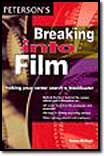 [The team passes around Reed’s report, which they had reviewed prior to the meeting, as Reed sits silently.]
[The team passes around Reed’s report, which they had reviewed prior to the meeting, as Reed sits silently.]
DT: So where did you get all the information for this report, what were your sources?
Reed: I attended a two-day film institute in the Twin Cities, plus I read all of these books and magazines.
DL: Where are your time logs?
Reed: My computer crashed last night, and I didn’t have a backup.
DL: Your computer crashed and you had no backup? And you’re
our school’s computer guru! How much credit are you looking
for?
Reed: One and a half to two credits.
JZ: Have you created any videos as part of the project?
Reed: Actually, I’m doing that for a separate project, which I hope to finalize soon.
DL: Let’s split the difference on the credit for this project and make it 1.75.
[Later advisor Dee Thomas explains that she has followed closely Reed’s progress on this project, talking with him about the books he read, his journal entries, the two-day institute he attended—for which he received a certificate of completion.]
Finally Brandon, 12, takes a seat with a proposal to raise and sell sheep.
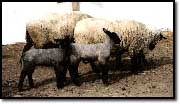 DL: So you are going to buy a bunch of sheep and raise them?
DL: So you are going to buy a bunch of sheep and raise them?
Brandon: Guess how many? [JZ and DL throw out numbers.] Twenty-five sheep!
JZ: What do you want to do this for? Where are you going to buy them?
Brandon: I guess I want to do it for the experience and the money. I’m going to raise them over the winter and then sell them in spring. There’s a type of sheep I saw at the state fair that I’d really like to buy. It’s a cerita sheep. I think they have them in St. Paul.
DL: The problem with buying the sheep in St. Paul is that
there are huge numbers that go through the lot there, raising the
problem of disease. It might be better to buy them locally. [More
discussion about where to buy the sheep.]
Brandon: Do
you know what heifers and steers are? Heifers are girls, steers
are boys. The more steers we sell, the more money we make. When
my dad had surgery last year, we had to sell 100 to pay the medical
bills.
JZ: So you’re looking to make money with these sheep?
Brandon: Yup. I’ll buy them with my own money and keep what I make.
DL: What do you have to be careful of with sheep? What happens if you put too much food in front of them?
Brandon: They’ll eat until they get sick. [Brandon talks about how his father keeps his calves healthy.]
JZ: How much credit are you hoping to get?
Brandon: A quarter.
DT: I see on your project proposal form a “Mary Plepers” on your list of living resources. Who’s she?
Brandon: She’s a lady who knows everything in the world about sheep.
JZ: So what do you think you’ll learn from raising sheep? How will it be different from raising cows? Do you think you’ll make more money from raising sheep than cows? You should compare them to see which is more profitable.
Brandon: Calves cost $145 each. But we don’t sell all of them and it takes them longer to get real big. The cost of sheep depends on their size. Big sheep cost $200, the ones I’ll buy will probably cost $50 to $100. First we have to get everything ready before we buy the sheep—the fencing, the food.
JZ: Do you have corn, a feed grinder? Will you feed silage to the sheep, too? How wet is the silage you have? Will you need to dry it first?
10:00 am Oil painting
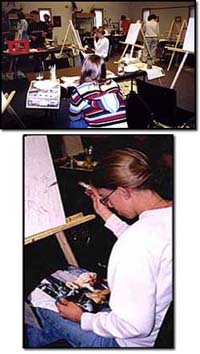 This week MNCS students have the chance to study oil painting with an artist-in-residence, through a grant from the Minnesota Council on the Arts. Thirteen students have signed up to work intensively with painter Kim Bovee for four and one-half hours a day for the week, then one day a week for the subsequent four weeks. The MNCS van takes them to a makeshift studio surrounded by farmland two miles from the school.
This week MNCS students have the chance to study oil painting with an artist-in-residence, through a grant from the Minnesota Council on the Arts. Thirteen students have signed up to work intensively with painter Kim Bovee for four and one-half hours a day for the week, then one day a week for the subsequent four weeks. The MNCS van takes them to a makeshift studio surrounded by farmland two miles from the school.
Bovee begins with a half-hour demonstration, explaining what she intends with each brush stroke. Before setting students loose to start painting on the pencilled canvases they created the day before, she says:
Why is it so important that we study and practice art in school? Because art challenges your thinking in special and new ways. It forces you to see and make new connections, gets new synapses in your brain working. And then when you go to other subjects, like writing, these new connections and ways of seeing start working for you.
As you paint, you will find that you are constantly having to make decisions, to ask and answer questions like, “Do I like the way this looks? Does it work? Does it convey what I want it to convey?” And then you need to make changes, revise, based on your answers to these questions. Don’t be afraid to use your rags and to erase strokes that don’t work for you, as you create them.
Bovee moves around the room, coaching and coaxing each student:
...The purpose of this exercise is to practice your brush strokes, to get comfortable with using the brush. Really play with your brushes.
...Try extending those brush strokes and keeping the paint thin.
... As you add paint, rework what you’ve done.
...Use your larger brushes first. Really try to have fun with your brushes.
...This is a mysterious image you have here, and contrast is the key. Start with an area of light, then add an area of dark, dark, dark, dark. Use less paint. Make the contrast strong. Texture will come tomorrow. Really look and ask yourself, is it dark or light?
...What we are doing here is like playing the piano. You don’t want to keep looking at each key. This isn’t filling in the blanks, it isn’t coloring. It’s painting. The more you challenge yourself, the easier it will get.
11:30 am Rehearsing for senior exhibitions Back at
school, students work alone or in two’s and three’s on projects
as diverse as those proposed in this morning’s review team meeting.
Chelsey, for example, puts the finishing touches on the diaries she
has created for a project on World War II. Students with a project
that takes place outside school hours often use this time to write
in their project journals, log their hours, or gather related information.
Would be sheep-raiser Brandon searches the Internet for the cerita
lambs he covets.
Back at
school, students work alone or in two’s and three’s on projects
as diverse as those proposed in this morning’s review team meeting.
Chelsey, for example, puts the finishing touches on the diaries she
has created for a project on World War II. Students with a project
that takes place outside school hours often use this time to write
in their project journals, log their hours, or gather related information.
Would be sheep-raiser Brandon searches the Internet for the cerita
lambs he covets.
Athough it’s still four months away, Laura has started a speech on Swing Music that she will give as part of her senior exhibition in February. “I talk all the time, with friends and groups. But standing up and giving a speech before the community, teachers, friends—that’s a different story. I’m worried to death.” She sits down with a visitor to the school, who has agreed to listen to her first dry run. After establishing Swing Music’s historic place in America’s Great Depression and World War II, Laura talks about its regional variations, including “Western Swing.”
It was “Spade” Cooley, who in the early 1940s, came up with the name “Western Swing.” Before that, the music had been called everything else from “Hillbilly” (which didn’t fit) to “Texas Swing” (a more legitimate name).
Spade, who came to be known as the “King of Western Swing,” was born in a storm cellar in 1910. He attended a school for Indian children. Most of his fans thought he was Caucasian, but under the law he was 25 percent Indian. His first wife was Native American, too. He got the nickname Spade because of his card gambling.
There were many Western Swing Bands, but only a few were well
known beyond the local area. Western Swing was mostly played in
the roadhouses, dance halls, and county fairs of small towns in
the lower part of the Great Plains. It was used strictly for dancing
and was described as “hot fiddling.” The local bands played
the same music as the better known bands, but they had different
instruments—sometimes guitars and violins—and a different
style, so the music had an altogether different feel to it.
Sometimes the concerts took place in people’s homes. They would just roll up their carpet, throw some corn meal on the floor, and call it a party.
Laura ends her practice speech 20 minutes later, amazed at how long she has talked.
12:30 pm Quiet reading
 Lunch—eaten at picnic tables in the school’s center, with staff and students mixing freely—gives way to quiet reading. Many students sit at their work stations with a book in hand. Some of today’s titles include: A Stitch in Time (Ann Rinaldi), The Pathfinder (James Fenimore Cooper), Chicken Soup for the Teenage Soul, Choices: A Teen Woman’s Journal for Self Awareness and Personal Planning, Be Your Own Architect, Relativity (Albert Einstein), Sanctuary (Beverly and David Lewis), A Stranger Is Watching (Mary Higgens Clark), the Bible.
Lunch—eaten at picnic tables in the school’s center, with staff and students mixing freely—gives way to quiet reading. Many students sit at their work stations with a book in hand. Some of today’s titles include: A Stitch in Time (Ann Rinaldi), The Pathfinder (James Fenimore Cooper), Chicken Soup for the Teenage Soul, Choices: A Teen Woman’s Journal for Self Awareness and Personal Planning, Be Your Own Architect, Relativity (Albert Einstein), Sanctuary (Beverly and David Lewis), A Stranger Is Watching (Mary Higgens Clark), the Bible.
12:40 pm River Project
Student teacher Cindy Milbrath has organized a “River Project,” where students will regularly monitor the water quality and flow of the Minnesota River, which runs just behind the school. Eight students have signed up for today’s first meeting. Milbrath opens with a powerpoint presentation on hydrology, peppered with Q & A.
 Milbrath: What does surface water mean? What does it include?
Milbrath: What does surface water mean? What does it include?
Student: Water that’s above the ground, not in the ground.
Milbraith: So what’s included in that? Lakes...
Student: Oceans, streams and rivers, marshes, rain...
Milbraith: Anyone know what this is a picture of?
Several Students: Hoover Dam.
Milbrath: What river did they dam up?
Students: The Colorado.
Milbrath: Anyone know what happened when they dammed it up?
Student: All the geological structure got covered up.
Milbrath: Right. And geologists worry that without the river flowing, there’s no erosion cutting the land, no silt with all of its nutrients being transported down to the soil below. Just as unsettling, the area underneath the dam is filled with sediment and sludge, pressing against the dam, which, in time, could cause the dam to break...
Milbrath: What difference does it make if a river’s flow is laminar or turbulent?
Student: When it’s turbulent, there’s mixing between the layers.
Milbrath: And what difference does that make?
Student: For one thing, it makes navigation harder.
Milbrath: In terms of pollution entering a stream or river, what difference does it make if the water is turbulent versus laminate?
Student: With turbulent water, the pollution mixes in faster. Also it makes it harder to tell the source of the pollution.
1:50 pm Webmasters
|
Kory, Brittany, and Nick have joined forces to create a web
site for fans of the Japanese animation called “Anime.”
Brittany is the team’s artist, and her animes and cartoons
fill the site. Nick is the web designer. Kory fills in the cracks.
They have been working together for three weeks, with the first
iteration of their site up and running. http://cln.no-ip.org/freeusers/gotnc/
Gathered around a computer screen, they confer about changing
the name and font size of one of the menu items on their site
and strategize about making a flash element in their masthead
change regularly.
Their site includes a forum that invites reader comments. A new posting from
“Mai,” critiquing one of Brittany’s cartoons,
catches their eye.
|
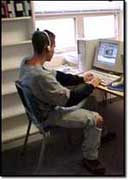
|

2:10 pm Student senate
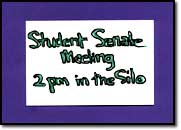 MNCS students and staff gather weekly for a town meeting to discuss concerns, new programs, and issues of shared interest. A student senate, composed in prior years of two elected representatives from each advisory group, complements the town meetings. Six students and two staff meet this afternoon to rethink the purpose and structure of the student senate, hoping to reinvigorate its contributions to the MNCS community. They begin by throwing out ideas for improving the quality of discussion and student input at town meetings.
MNCS students and staff gather weekly for a town meeting to discuss concerns, new programs, and issues of shared interest. A student senate, composed in prior years of two elected representatives from each advisory group, complements the town meetings. Six students and two staff meet this afternoon to rethink the purpose and structure of the student senate, hoping to reinvigorate its contributions to the MNCS community. They begin by throwing out ideas for improving the quality of discussion and student input at town meetings.
Katie: We need better, advance notice of what’s going to be discussed at a town meeting.
Tim: It doesn’t work well when staff just throw something up for discussion at town meeting and expect an immediate response from students.
Reed: We need to distinguish at town meetings between items that need discussion and decision making versus things that could just as easily be shared in the daily bulletin, like announcements of an upcoming trip or fundraiser.
Dean Lind: You all are somewhat exceptional in that you want to have a voice in what goes on at the school. There are some kids who shut off as soon as you start talking about democratic principles and decision making. So maybe we need to break town meeting into two parts, with the second part devoted to democratic processes with the understanding that those students who want to leave can.
Katie: True, not everyone is interested in everything that needs deciding on—for example, I have no interest in talking about an issue that involves the [construction] shop. Participating in democratic decision making can’t be mandatory.
The group then discusses what they believe the goals of a “new” student senate should include. A list takes shape on the blackboard.
OUR GOALS:
To create and support a broad variety of actions/ideas
To provide tutoring, assistance to new, younger students
To provide peer mediation and role models
To take students’ input and make it a reality
To take action for positive change, including helping revise school rules and policies that don’t work
To model democratic principles
To be the voice of the student body
 HOME l
MNCS INTRO
l Day in the Life
HOME l
MNCS INTRO
l Day in the Life
 HOME l
MNCS INTRO
l Day in the Life
HOME l
MNCS INTRO
l Day in the Life

